As the crisp chill of autumn settles in and daylight begins to fade, gardeners everywhere face a familiar challenge—protecting tender plants from the first frost. Those tropical beauties, succulents, herbs, and flowering annuals that thrived all summer in the warmth of your garden or patio are suddenly at risk. The key to saving them lies in acting early and wisely—bringing your tender plants indoors before frost hits.
Transitioning plants from outdoor to indoor conditions isn’t as simple as moving pots inside. It requires planning, inspection, cleaning, and acclimatization to prevent stress, pests, or disease. In this detailed guide, we’ll cover everything you need to know about safely and successfully bringing your tender plants indoors for the winter—so they stay healthy and ready to thrive again when spring returns.
Why You Need to Bring Tender Plants Indoors Before Frost
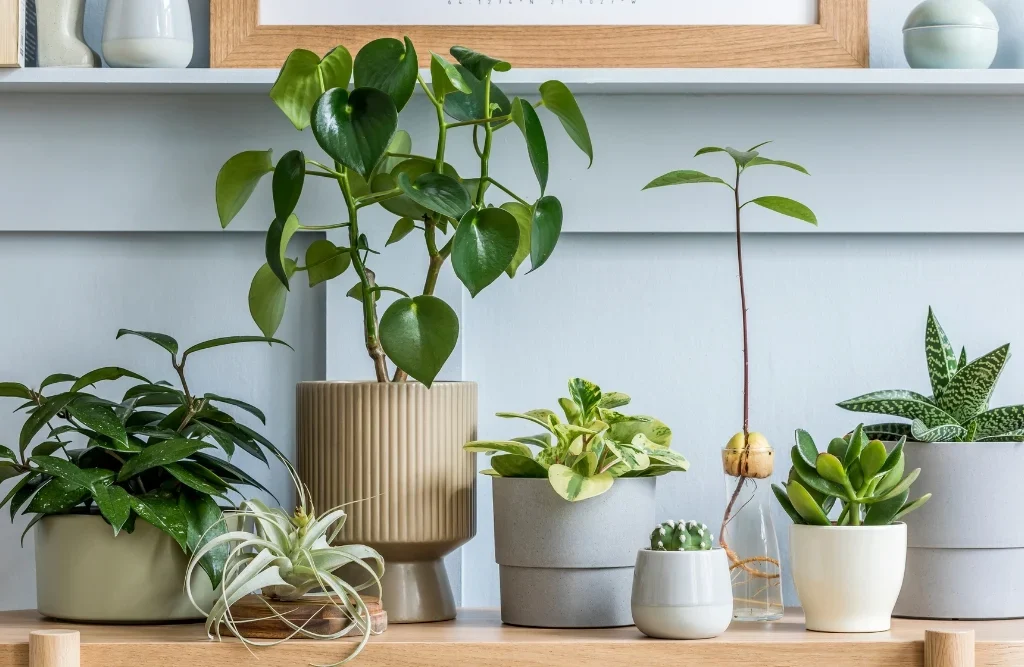
Frost occurs when temperatures drop to around 0°C (32°F) or lower, causing ice crystals to form on plant tissues. For tropical and subtropical plants—like hibiscus, coleus, begonias, and succulents—this can be deadly. Even a light frost can damage leaves and stems or kill roots in containers.
Why It Matters:
- Prevents frost damage: Tender plants can’t survive freezing temperatures.
- Saves time and money: Overwintering plants indoors means you won’t have to repurchase them next year.
- Protects root systems: Pots freeze faster than ground soil, making potted plants especially vulnerable.
- Maintains plant maturity: Mature plants resume growth faster in spring than new seedlings.
Expert Tip: Check your local frost dates online or via your weather app. Plan to start the moving process 2–3 weeks before the first expected frost.
Step 1: Identify Which Plants Need to Come Indoors
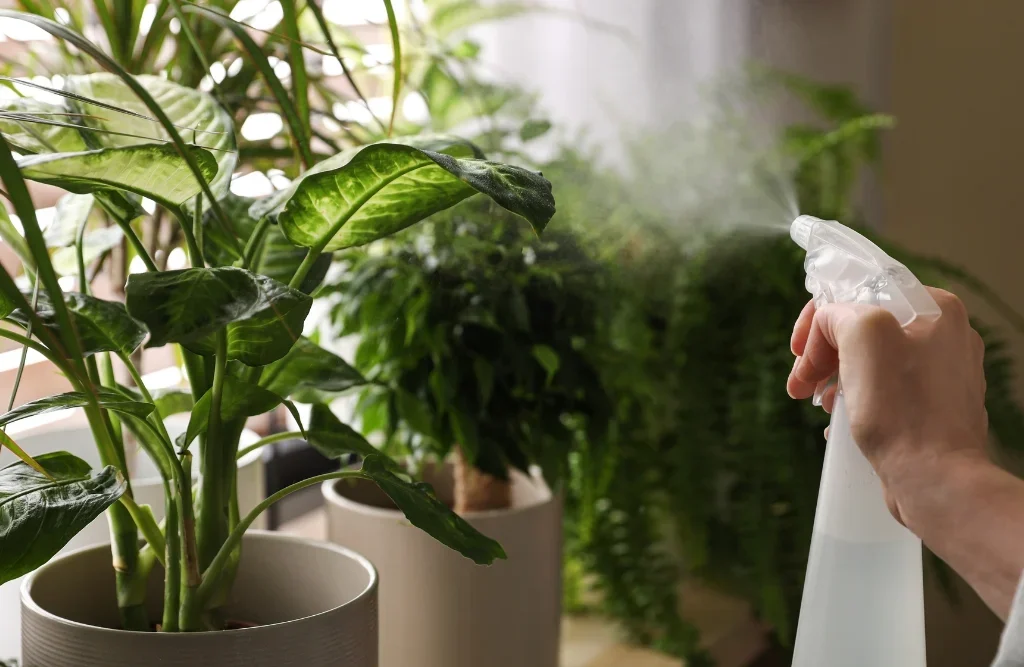
Not every outdoor plant needs to be brought inside. Some can withstand light frost, while others must be rescued before temperatures dip below 50°F (10°C).
Plants You Should Bring Indoors:
- Tropical plants – Hibiscus, bougainvillea, mandevilla, and banana plants.
- Tender perennials – Geraniums, fuchsias, and begonias.
- Herbs – Basil, lemongrass, and rosemary (though hardy varieties like thyme can stay out longer).
- Houseplants summering outdoors – Spider plants, pothos, ferns, or palms that enjoyed fresh air during summer.
- Succulents and cacti – Especially varieties not adapted to cold, such as echeveria or jade plants.
Expert Tip: Hardy perennials like lavender, coneflower, and hostas can safely remain outside; just add mulch for insulation.
Step 2: Inspect Plants for Pests and Diseases
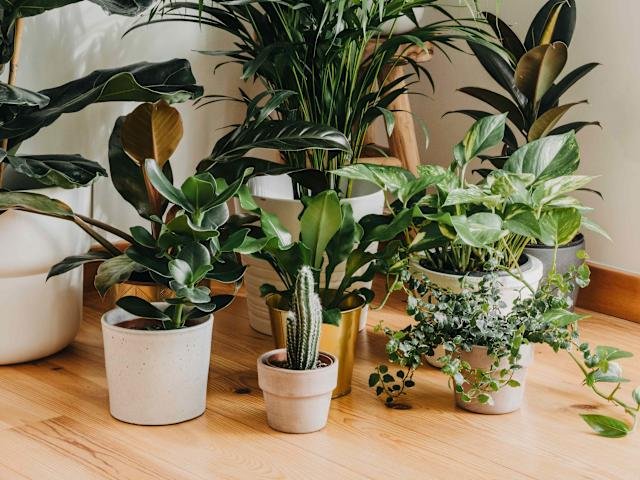
Before bringing any plant indoors, it’s critical to ensure it’s pest-free. Even a few small insects can multiply quickly in the warm, closed environment of your home, infesting other houseplants.
How to Inspect:
- Examine leaves (top and underside), stems, and soil surface for pests such as aphids, spider mites, mealybugs, and whiteflies.
- Check for signs of disease like yellowing leaves, sticky residue, or mold on soil.
How to Treat:
- Rinse foliage with a strong stream of water to dislodge pests.
- Wipe leaves with a mild soapy water solution (1 teaspoon of mild dish soap per liter of water).
- For severe infestations, use neem oil or an insecticidal soap and keep the plant isolated for a few days before moving it indoors.
Expert Tip: Submerge smaller pots in a bucket of lukewarm water for 15–20 minutes to flush out soil-dwelling pests like fungus gnats or ants.
Step 3: Prune and Clean Plants Before Moving Them
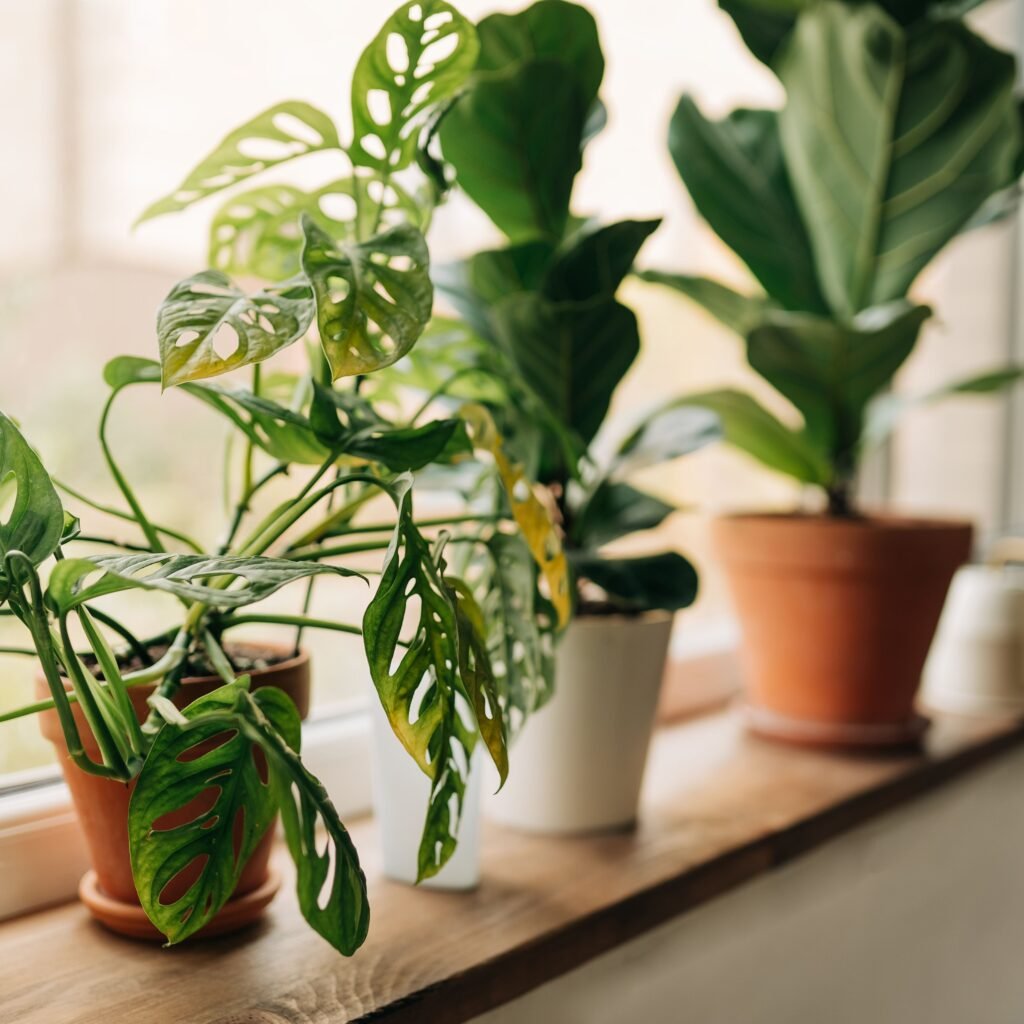
Before making the move, give your plants a mini spa day. Cleaning and pruning help reduce pests, promote healthy regrowth, and make them easier to manage indoors.
How to Do It:
- Prune dead or damaged leaves and stems. This reduces stress and encourages fresh growth.
- Trim long or leggy branches. This helps the plant fit your indoor space and improves airflow.
- Wipe dust off leaves. Use a damp cloth to clean surfaces so plants can absorb light more effectively indoors.
Expert Tip: Avoid heavy pruning right before bringing plants inside—light trimming is best. Major pruning can shock them just as they’re adjusting to a new environment.
Step 4: Repot or Refresh Soil if Needed
If your plants have been outside all summer, their soil may be compacted, depleted, or harboring insects. Repotting gives them fresh nutrients and a clean environment for the winter.
When to Repot:
- If roots are growing out of drainage holes.
- If the soil looks dry, hard, or has mold.
- If the plant’s growth slowed significantly over summer.
How to Do It:
- Choose a pot 1–2 inches larger in diameter than the current one.
- Use a well-draining indoor potting mix (avoid using garden soil indoors).
- Gently loosen roots before repotting.
- Water lightly after transferring to help the soil settle.
Expert Tip: Add a small layer of perlite or pebbles at the bottom of the pot for extra drainage—this prevents root rot in indoor environments.
Step 5: Acclimate Plants Gradually to Indoor Conditions
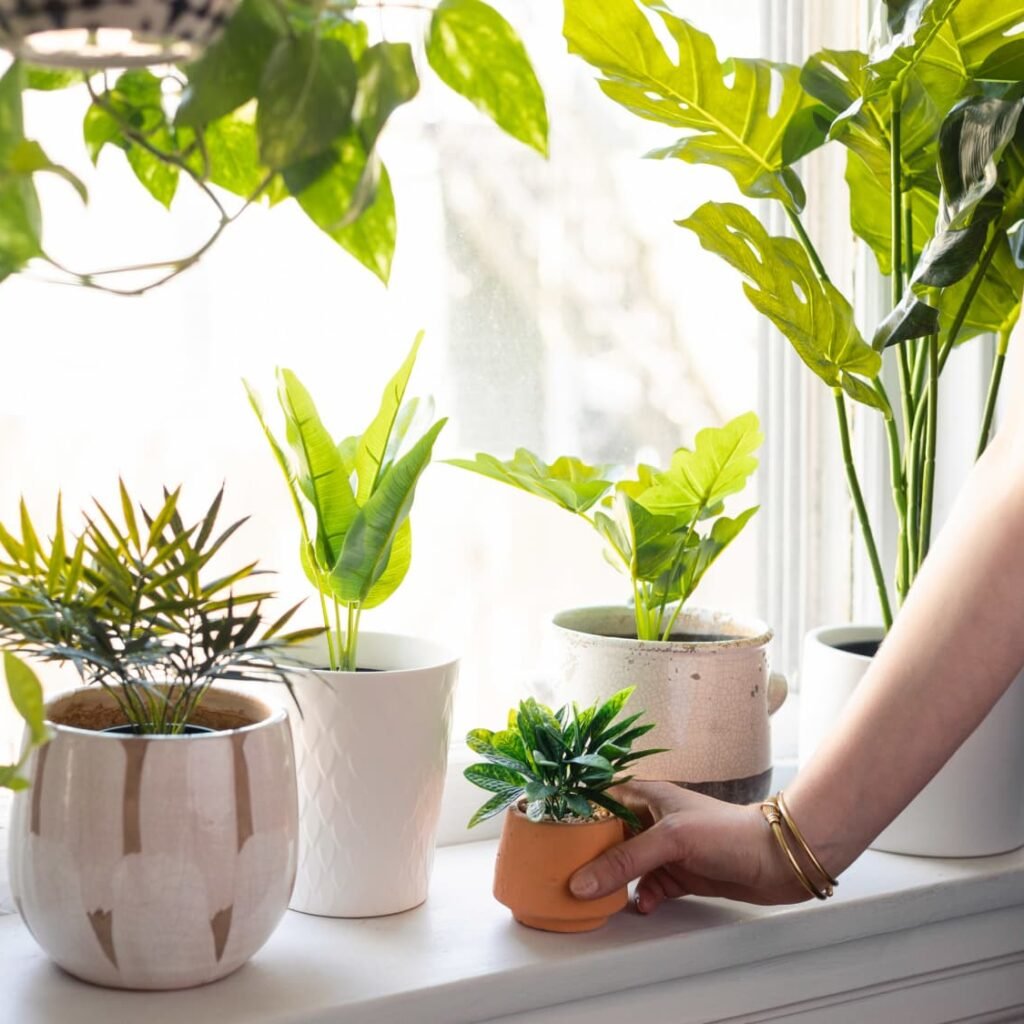
Plants don’t like sudden changes. The transition from bright, outdoor sunlight to lower indoor light levels can stress them, causing leaf drop or slowed growth.
How to Acclimate:
- About 7–10 days before moving indoors, start placing plants in a shaded or sheltered outdoor area for part of the day.
- Gradually increase the time they spend in shade and decrease watering slightly.
- Move them indoors permanently after a week or so, once they’ve adjusted to reduced light and humidity.
Expert Tip: Avoid placing plants near heat vents, radiators, or cold drafts once inside—these can cause temperature stress.
Step 6: Choose the Right Indoor Location
Different plants have different light and temperature needs, so placing them correctly indoors is crucial.
Best Locations:
- South- or west-facing windows: Ideal for sun-loving plants like hibiscus, geraniums, and succulents.
- East-facing windows: Perfect for medium-light plants such as ferns, begonias, and herbs.
- Low-light corners: Good for hardy houseplants like pothos, snake plants, and peace lilies.
Temperature Tips:
- Maintain 60–75°F (15–24°C) during the day and no lower than 55°F (13°C) at night.
- Keep plants away from cold windowpanes in freezing weather.
Expert Tip: If your home lacks natural light, use grow lights to supplement daylight—especially for flowering or tropical plants.
Step 7: Adjust Watering and Humidity
Plants need less water indoors during the winter because growth slows down and evaporation decreases. Overwatering is one of the most common mistakes gardeners make when overwintering plants indoors.
How to Water Properly:
- Check soil moisture before watering—only water when the top inch feels dry.
- Use room-temperature water to avoid shocking roots.
- Empty saucers after watering to prevent soggy roots.
Humidity Tips:
Indoor air tends to be dry in winter. Increase humidity by:
- Grouping plants together (they create a mini humid microclimate).
- Using a humidifier or placing a tray of water and pebbles beneath pots.
- Misting occasionally—but not excessively, to avoid mold.
Expert Tip: Plants like ferns and calatheas thrive with higher humidity, while succulents and cacti prefer drier air. Adjust care accordingly.
Step 8: Continue Light Maintenance All Winter
Your plants may grow more slowly indoors, but they still need attention. Check them regularly for pests, monitor light exposure, and rotate them occasionally for even growth.
Winter Care Checklist:
- Inspect weekly for signs of pests or leaf yellowing.
- Dust leaves once a month to ensure good light absorption.
- Fertilize sparingly—once every 6–8 weeks using diluted liquid fertilizer (unless plants are dormant).
- Rotate pots every few weeks for balanced growth.
Expert Tip: If some leaves drop soon after moving indoors, don’t panic. It’s a natural adjustment response—new leaves will appear once the plant settles.
Step 9: Plan for the Move Back Outdoors in Spring
When the threat of frost has passed, it’s time to prepare your plants for life outdoors again—but do it gradually.
How to Transition Back:
- Start by placing plants outside in a shaded area for a few hours a day.
- Increase sun exposure gradually over 10–14 days.
- Resume normal watering and feeding once active growth restarts.
Expert Tip: Never move plants outdoors until nighttime temperatures consistently stay above 50°F (10°C).
Conclusion: Protecting Tender Plants for a Thriving Garden Year After Year
Bringing tender plants indoors before frost hits isn’t just about saving them—it’s about extending their lifespan and preserving the beauty and hard work you’ve put into your garden all season. With careful inspection, gradual acclimation, and proper indoor care, your tropicals, herbs, and delicate flowers can flourish through the winter months.
When spring arrives, you’ll have healthy, mature plants ready to return outdoors—stronger, fuller, and more beautiful than ever. By mastering the art of overwintering, you’ll not only save money but also enjoy the satisfaction of nurturing your garden’s life year-round.
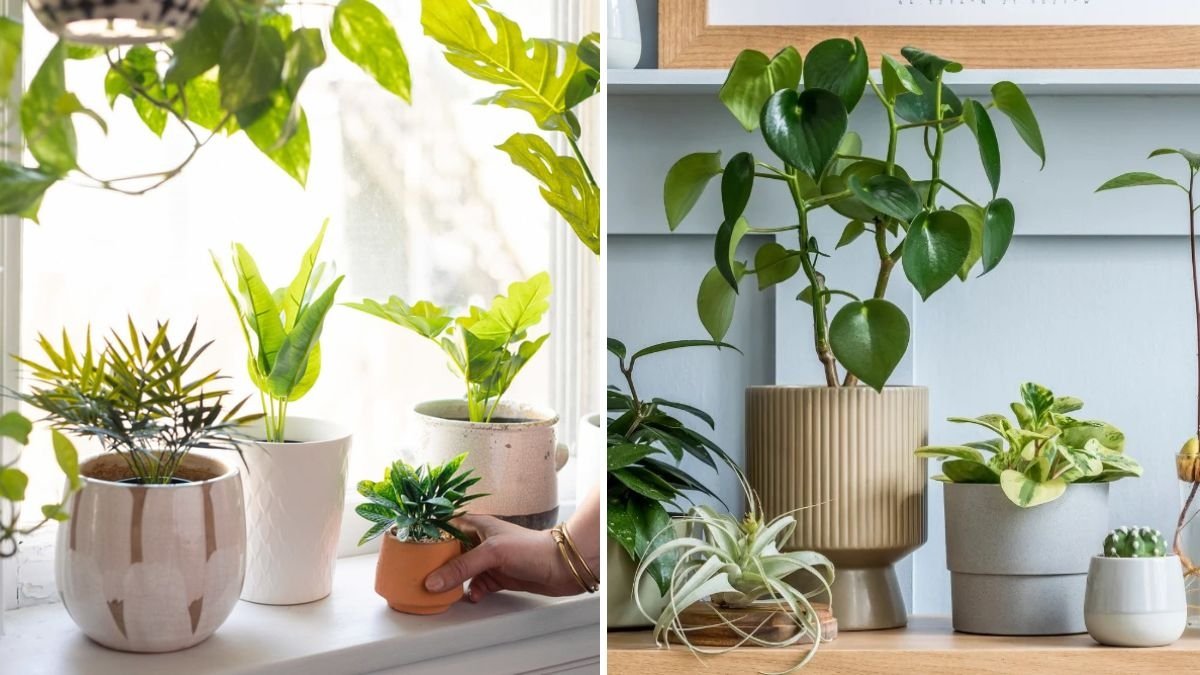




Leave A Comment